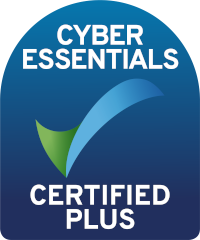Social media platforms have become an integral part of our daily routines, providing previously unimaginable ways to access information, make valuable connections and boost both business and personal profiles.
However, just as many of us now take for granted their power for good, they also leave us vulnerable to exploitation by cyber-criminals.
Far too many of us are essentially ‘data nudists’, often unknowingly exposing our essential personal information to those from whom we would otherwise protect it.
To be a responsible member of an online social media community it is vital educate yourself about its privacy and security settings.
Here we share some simple but effective tips for protecting yourself on three of the most popular social media platforms, Facebook, What’s App and LinkedIn.
How to put a smile on your Facebook
1. Your profile picture will be seen in searches for your name and regardless of how you configure your settings, your ‘Friends’ will be able to share or email it to people. The best option is to use a picture of a football team badge or other pop culture reference point that your friends will recognise as something you associate with, but which is not your own face.
2. As with any online account, make sure to create a strong password that cannot be easily guessed at.
3. Go into the app’s ‘Security’ settings and enable ‘Secure Browsing’. If you opt in to this security feature, your traffic, excluding your own activity, will be encrypted and therefore more difficult to access your account without permission
4. Again in the ‘Security’ settings, enable login notifications so you will know if and when your account has been accessed by anyone but yourself.
5. Also select the option to ‘Require Login Approvals’ so you will receive a text message code to log in if Facebook doesn’t recognise the device being used.
6. In the app’s ‘Subscribers’ settings, uncheck the ‘Allow Subscribers’ box so that non-friends will not see your public posts and become involved in your conversations.
7. Don’t install third-party apps. Check in the ‘Apps’ section to make sure there is nothing suspicious-looking that you are already subscribed to.
8. If you would rather limit advertisers’ power to reach you, in the ‘Facebook Adverts’ section you can choose to edit your third party and social advertising settings to ‘No One’.
9. In the ‘How To Connect’ part of your ‘Privacy’ settings, you can ensure that only ‘Friends’ are able to search for you by name or find you by email address and phone number. Also go to the ‘Timeline and Tagging’ section and select only the ‘Friends’ options to limit who can interact with your posts and those you are tagged in.
10. To ensure your past posts are not shared with people you don’t know, in the ‘Apps, Games and Websites’ section of the ‘Privacy’ settings,’ click ‘Limit Old Posts’ in the ‘Manage Past Post Visibility’ section.
What about What’sApp?
Often messages are passed around claiming that new rules have been introduced on social media sites and you must change your settings to protect yourself. But it can be difficult to know if such warnings are genuine or a form of predatory social engineering designed to retrieve your personal information.
One recent, genuine call to action involved What’sApp having changed its default settings to include ‘Everyone’, meaning that people you don’t know can add you to chat groups without your knowledge. This could open you up to inclusion by scammers and any number of miscreants, so to rule out any possibility of getting caught up in something you don’t want to be, follow these steps:
1. Go into your What’sApp settings
2. Look for ‘Account’ and then ‘Privacy’
3. Go to ‘Groups’
4. Change your preference from ‘Everyone’ to ‘My contacts’.
Eliminate weak links in LinkedIn
LinkedIn is perhaps one of the most useful and vital business tools of the 21st century. It has the capability to increase reach of your business as well as your personal professional profile, but it can also expose you to commensurate risks.
To control your public profile settings from your desktop, click the ‘Me’ icon at the top of the page, then select ‘View Profile’. In the ‘Edit Public Profile & URL’ section on the right, toggle ‘Your Profile’s Public Visibility’ to ‘Off’.
To do the same in the LinkedIn mobile app, tap your profile picture, then go into ‘Settings’, ‘Visibility’ and ‘Edit your public profile’.
Xpertex uses social media data, as an open source intelligence resource, in order to undertake phishing attacks as part of cyber-training exercises. To find out how we can help you and your business be properly protected against cyber-crime, email info@xpertex.co.uk or call 020 3021 0749.



